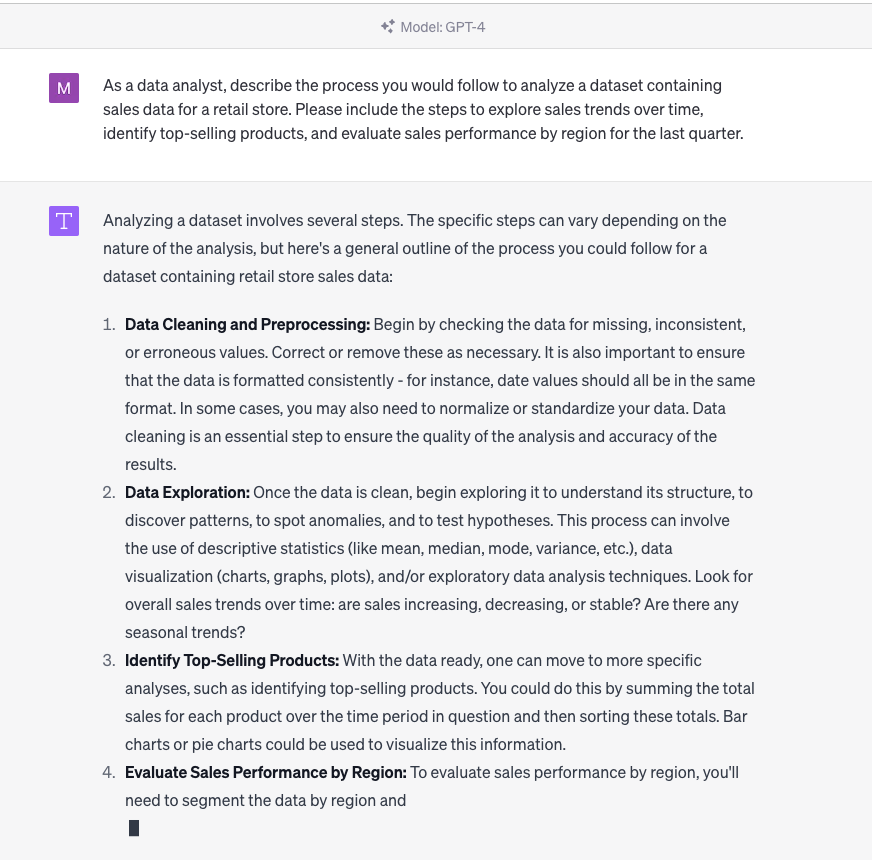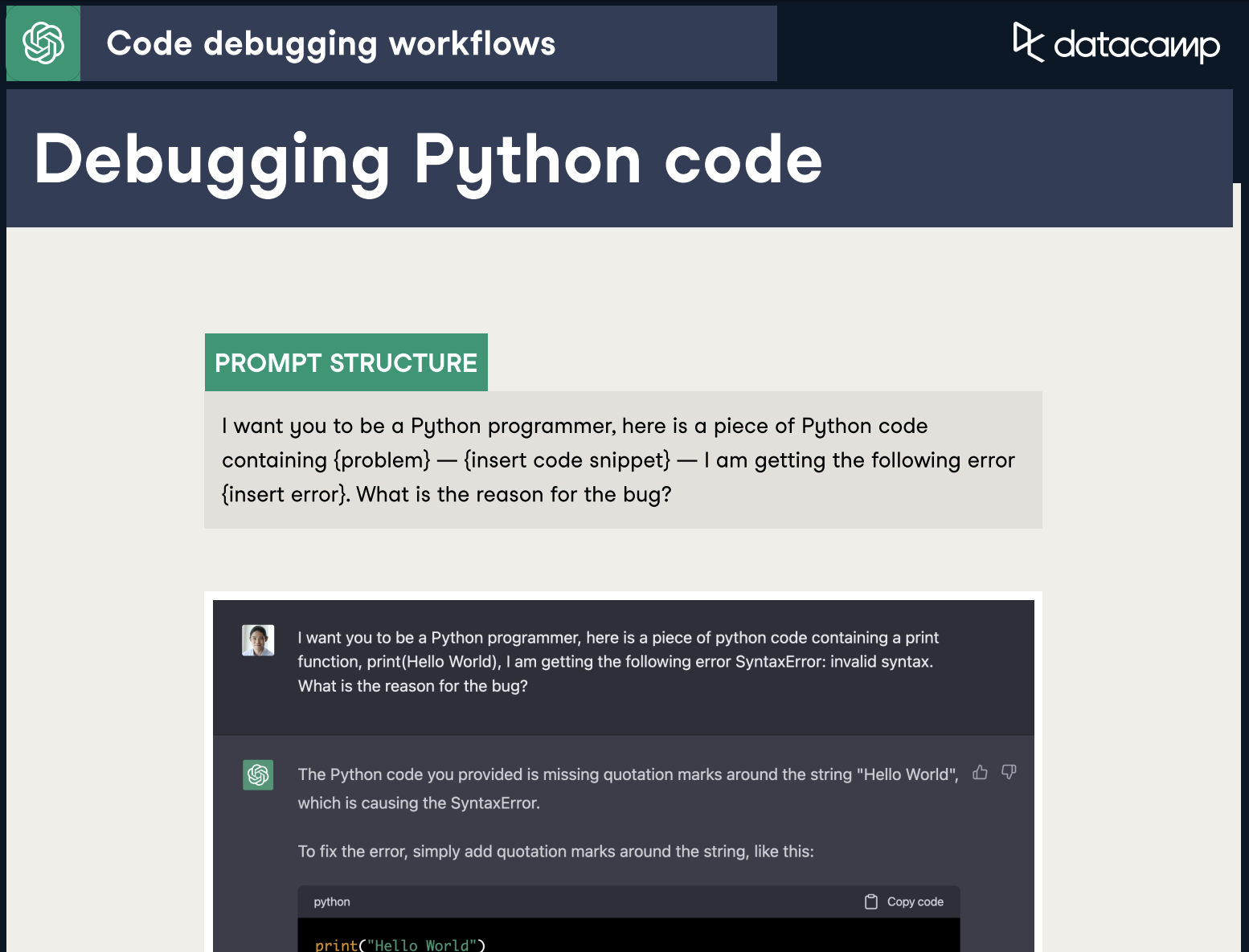course
A Beginner's Guide to ChatGPT Prompt Engineering
Discover how to get ChatGPT to give you the outputs you want by giving it the inputs it needs.
Updated Jul 2024 · 6 min read
Introduction to ChatGPT Course
Get Started with ChatGPT
What is ChatGPT prompt engineering?
Why is prompt engineering important?
What are some tips for effective ChatGPT prompt engineering?
How does ChatGPT handle ambiguous prompts?
How can I improve the model's comprehension of my prompts?
How long can a ChatGPT prompt be?
Can ChatGPT understand and generate text in multiple languages within the same prompt?
How can you ensure ChatGPT provides accurate factual information?
Learn more about ChatGPT and AI with these courses!
1 hour
15.4K
track
ChatGPT Fundamentals
2hrs hours
course
ChatGPT Prompt Engineering for Developers
4 hours
9.5K
See More
RelatedSee MoreSee More
tutorial
A Beginner's Guide to ChatGPT Prompts for Marketing
Discover how to use ChatGPT for marketing, including some example prompts to get you started.
Christine Cepelak
9 min
tutorial
A Beginner's Guide to Using the ChatGPT API
This guide walks you through the basics of the ChatGPT API, demonstrating its potential in natural language processing and AI-driven communication.
Moez Ali
11 min
tutorial
How to Use ChatGPT for Sales
Discover the essential prompts and tips for getting the most out of ChatGPT for sales
Matt Crabtree
10 min
code-along
A Beginner's Guide to Prompt Engineering with ChatGPT
Explore the power of prompt engineering with ChatGPT.
Adel Nehme
code-along
ChatGPT Prompt Engineering for Beginners
In this webinar, you'll get ideas for incorporating ChatGPT into your workflows and learning the basics of writing good prompts.
Adel Nehme
code-along
Advanced ChatGPT Prompt Engineering
In this session, you'll learn advanced prompting skills such as using prompt templates, testing the quality of your prompts, and working with images in prompts.
Isabella Bedoya


